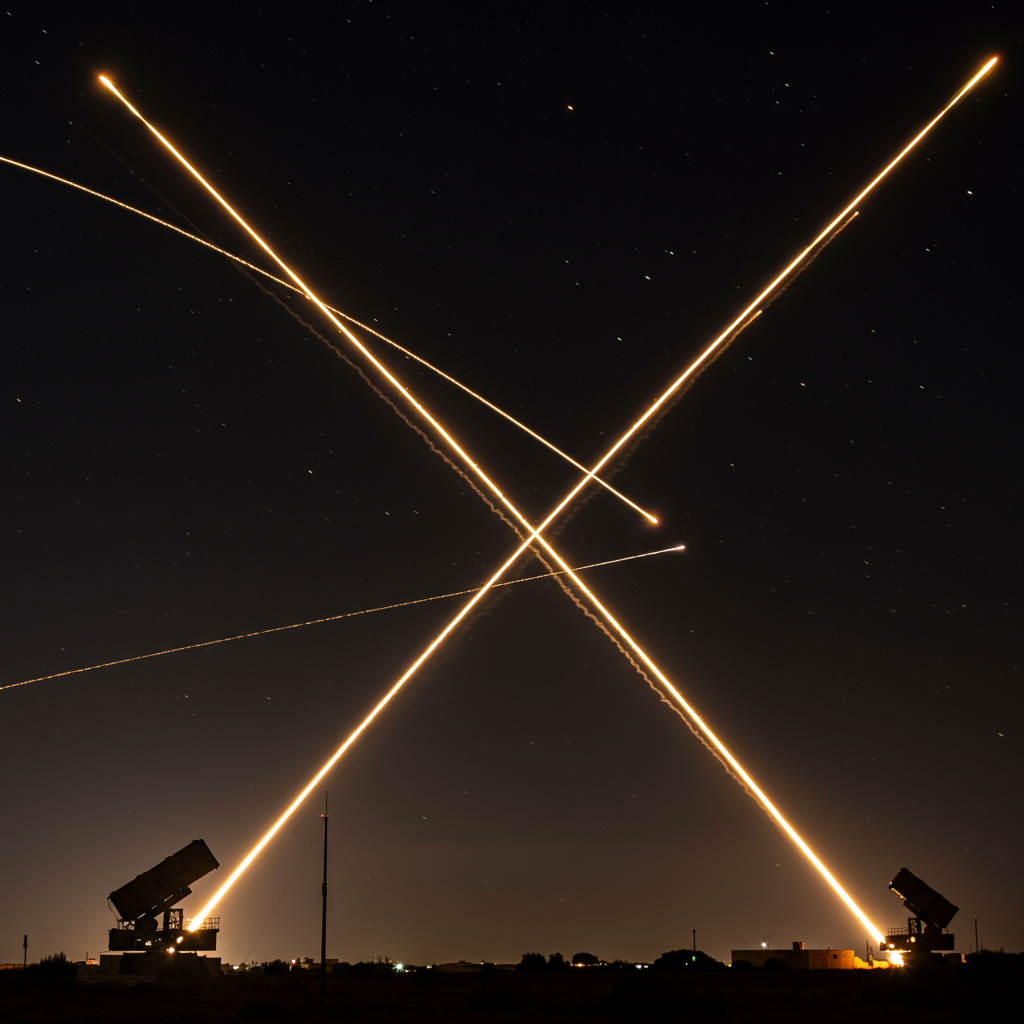Following a period of intense hostility with Israel that inflicted significant damage on infrastructure and leadership, Iran has reportedly launched a sweeping domestic campaign. Authorities are actively pursuing individuals suspected of espionage and infiltration across the country. This move, some observers fear, could serve as a pretext for a broader crackdown targeting political opponents and minority groups. Tehran is visibly grappling with the strategic and physical toll left by the recent confrontations, prompting a sharp internal focus.
The call for vigilance has spread widely, reaching the public through state channels. Iranian authorities are now urging ordinary citizens to report behaviors or objects they deem suspicious, even those that seem minor. Examples provided include individuals carrying unusual bags, wearing sunglasses at night, or donning hats – items described as uncommon accessories in Iran under typical circumstances. This granular level of requested surveillance underscores the depth of concern within the regime about potential internal threats.
Citizens have also been specifically instructed to report suspicious vehicle movements. This includes vehicles displaying stolen license plates or commercial types like pickup trucks with covered beds and vans seen operating during odd hours. Officials openly warn that such activities could indicate foreign agents or internal enemies are operating undetected, suggesting a belief that infiltrators are leveraging logistical means to move personnel or equipment secretly.
The sheer scale and perceived success of Israel’s strikes during the recent conflict appear to be the primary driver behind this intensified domestic response. As part of the campaign, authorities have reportedly apprehended hundreds of individuals. Reports suggest the judicial system has dramatically accelerated trials, leading to swift executions for many alleged spies. Simultaneously, a new law is being fast-tracked through the legislative process, potentially expanding the application of the death penalty for anyone convicted of espionage-related charges, signalling a hardened stance against perceived disloyalty.
Even after the ceasefire brought a pause to direct military exchanges, the arrest campaign has continued unabated. The extensive nature of this security sweep has fueled considerable concern among some inside Iran. There is a palpable fear that the government is leveraging the national security crisis as an opportunity to suppress political dissent, drawing on its long-established history of repressing opposition movements under various pretexts.
Hadi Ghaemi, the director for the Center for Human Rights in Iran, has commented on the severe nature of the situation. He stated that the government is pursuing perceived threats within the country with extreme force. Ghaemi characterized the state’s reaction as akin to that of a wounded animal, highlighting the perceived intensity and potentially indiscriminate nature of the current security drive aimed at rooting out internal adversaries.
Fears of internal infiltration are grounded in reality; Israel maintains a documented history of successful intelligence operations within Iran’s borders. These covert activities have included targeted assassinations of key figures and acts of sabotage against strategic facilities. Officials from both nations have indicated that during the recent war, Israel not only demonstrated but perhaps even emphasized its capability to establish networks and conduct operations originating from inside Iran. This public display of perceived vulnerability adds considerable weight to the Iranian government’s stated justification for launching such an intensive internal manhunt.
The Catalyst: War’s Severe Consequences
The recent conflict represented arguably the most severe national security challenge Iran has faced since the devastating Iran-Iraq War decades ago. Israel’s actions, sometimes described as “preventive strikes” aimed at potential future threats rather than immediate ones, reportedly inflicted substantial damage across various sectors. These attacks, possibly linked to intelligence concerning Iran’s nuclear capabilities, targeted key sites including alleged nuclear facilities at Fordow, Natanz, and Isfahan, reportedly utilizing advanced weaponry supplied by the United States.
The strikes caused significant casualties and widespread destruction within Iran. Crucially, they dealt a severe blow to the regime’s organizational structure by reportedly killing several high-ranking military commanders, including the head of the Islamic Revolutionary Guard Corps (IRGC) and the chief of its Aerospace Force. This created a critical leadership vacuum at crucial levels of command. The subsequent appointment of General Abdolrahim Mousavi, notably the first regular Army officer to hold the position of Chief of Staff, a role previously exclusive to the IRGC, underscores the strategic necessity felt by the government to rapidly restore command cohesion and demonstrate stability during the crisis.
While a swift response involving missile attacks on Israeli cities showcased a degree of command-and-control resilience, the depth of enemy penetration and the loss of top military brass sparked public questioning within Iran. Concerns arose regarding the effectiveness of the nation’s defense and intelligence agencies in preventing such impactful attacks. This potential erosion of public confidence likely contributes significantly to the regime’s intensified efforts to identify and neutralize perceived internal threats while simultaneously attempting to control domestic narratives about the conflict’s outcome and national security capabilities.
The Hunt Intensifies: Searching for Enemies Within
The detailed public appeals, asking citizens to report specific, seemingly minor behaviors, underscore the heightened level of alarm among Iranian authorities regarding internal security. The government is not solely relying on its established intelligence services; it is actively attempting to enlist the general populace in its extensive manhunt. Requests to report small deviations in behavior or appearance, such as wearing sunglasses at night or an unusual hat, reflect a pervasive suspicion that spies or collaborators could be hiding in plain sight, attempting to blend into everyday life undetected.
Similarly, the specific request for reports on vehicle usage, particularly commercial or work vehicles operating at unusual times, suggests authorities may believe infiltrators are using common logistical means to transport personnel, equipment, or intelligence without drawing undue attention. The mention of stolen license plates further supports this theory, as they would facilitate clandestine movement. This broad solicitation of public vigilance indicates either a lack of specific intelligence regarding the precise scale and nature of perceived infiltration or a calculated strategic move designed to create a climate of fear and suspicion throughout society, potentially encouraging self-policing and discouraging any form of non-conformity or overt dissent.
The security sweep has reportedly resulted in the apprehension of hundreds of individuals, a scale that human rights organizations view with profound alarm. The reported swiftness of trials and executions for those accused of espionage, coupled with ongoing legislative efforts to expand the scope of the death penalty for such charges, signals a government determined to project an image of decisive action against perceived threats. This approach, while framed by the state as essential for national security and stability, raises serious concerns about due process, transparency, and the significant potential for these measures to be misused against political opponents, ethnic minorities, or other dissenting voices under the broad guise of counter-espionage efforts. The statement by the director for the Center for Human Rights in Iran, describing the regime’s actions with “deadly force” like a “wounded animal,” starkly captures the perceived severity and potential overreach of the ongoing campaign.
Linking Internal Threats to External Vulnerabilities
The intense focus on domestic adversaries is directly connected to the perceived failures that allowed Israel to carry out such impactful strikes deep inside Iran. Israel’s historical record of successful covert operations within the country, including the targeting of nuclear scientists and facilities, provides a pre-existing context for the current alarm. However, reports indicate that during the recent conflict, Israel did not just succeed in its attacks but also seemingly “flaunted” its ability to cultivate networks and launch widespread operations from within Iran’s borders, not just from outside.
This perceived public demonstration of internal access by an external adversary was a significant blow to the regime’s carefully curated image of tight control and effective counter-intelligence capabilities. The apparent ability of an external enemy to operate so effectively inside the country inevitably prompts difficult questions internally: who might have facilitated these operations? Who could be collaborating? And where did the nation’s security apparatus fail? The intense internal hunt is a direct, likely panicked, response to these perceived failures, aiming to identify alleged collaborators and restore an image of robust security and unwavering control, both domestically for its citizens and internationally for its adversaries and allies.
Furthermore, the conflict’s outcome, including the significant leadership losses and physical damage sustained, led to public questioning within Iran regarding the overall efficacy of its defense and intelligence capabilities. This domestic scrutiny adds considerable pressure on the government to identify culprits and demonstrate convincingly that it is actively addressing the vulnerabilities exposed by the recent conflict. Therefore, the internal crackdown can be viewed as a complex, multifaceted response: a genuine effort to neutralize actual perceived threats, a simultaneous move to control the narrative surrounding recent security failures, and an attempt to preemptively suppress any potential dissent that might arise from public dissatisfaction with the war’s handling and its perceived outcomes.
regional Fallout and Shifting Dynamics
The repercussions of the Iran-Israel conflict extend significantly beyond the two nations, impacting regional stability and highlighting potentially shifting dynamics within Iran’s network of regional allies, commonly known as the “Axis of Resistance.” Contrary to widespread expectations, Iran’s key regional proxies provided surprisingly limited direct military support during the most intense phase of the conflict. Groups like Hezbollah in Lebanon, Hamas in Gaza, and various Iraqi militias, many already strained by previous engagements with Israel, offered strong rhetoric but largely refrained from engaging in significant, large-scale military actions directly against Israel during this specific period.
This noticeably limited response from traditionally active groups cast doubt on the perceived cohesion and immediate readiness of the Axis of Resistance, suggesting that members prioritized self-preservation, strategic realism, or faced internal constraints. This situation has potentially forced Tehran to reassess its regional deterrence strategy and the reliability of its network. Only the Houthis in Yemen reportedly continued launching long-range missile and drone strikes against Israel throughout this specific conflict phase, highlighting their unique position within the network.
The conflict also significantly heightened concerns among neighboring regional states. Pakistan, sharing a long and sometimes volatile border with Iran, expressed considerable alarm, particularly regarding potential instability spilling over into its already sensitive Balochistan province and the risk of large-scale refugee flows. Islamabad temporarily closed key border crossings and voiced diplomatic support for Tehran while also attempting to position itself as a potential mediator, highlighting the complex regional dynamics and significant domestic sectarian considerations influencing its foreign policy choices.
Jordan faced its own specific challenges, experiencing disruptions after attacks potentially affected Israeli gas supplies from the Leviathan field, leading to a temporary suspension of exports to the kingdom. This incident triggered renewed calls within Jordan to cancel its controversial gas deal with Israel, raising pointed questions about national energy security, economic vulnerability, and sovereignty amidst heightened regional volatility and public pressure. Even states with established normalized diplomatic ties to Israel, including Saudi Arabia, Bahrain, and the UAE, reportedly issued statements condemning the Israeli actions against Iran, emphasizing the crucial need to uphold national sovereignty and avoid further escalating already dangerous regional tensions.
Strategic Repercussions and Future Crossroads
The ceasefire may have temporarily halted direct fighting, but the Islamic Republic of Iran now confronts a significant strategic reckoning. Perhaps the most profound long-term consequence of the conflict is the likely erosion of its regional deterrence image. The ability of an adversary to penetrate its defenses so deeply and successfully target high-level military figures has exposed a vulnerability that could potentially embolden regional rivals and adversaries while simultaneously undermining public support and confidence at home regarding the regime’s ability to protect its citizens and leaders.
Rebuilding damaged military command structures and reinforcing political stability will be a significant challenge for the regime, further complicated by existing economic strains that have been exacerbated by international sanctions. The recent crisis may also accelerate pre-existing internal pressures for reform, particularly from a younger generation within Iran that increasingly questions the viability and direction of the current status quo. Iran’s perceived influence and control over the “Axis of Resistance” network could also weaken significantly if its regional proxies perceive Tehran’s primary strategic priority shifting demonstrably towards self-preservation and domestic consolidation rather than active regional confrontation with Israel or other adversaries.
The unique “threshold war” nature of the recent conflict, involving a state perceived as nearing but not yet openly possessing nuclear weapons, has also arguably rewritten certain rules of escalation in the region. Israel’s stated strategy of preventive strikes aimed at delaying or disrupting Iran’s nuclear program may, ironically, precipitate the very outcome they sought to avoid. Facing exposed conventional vulnerabilities, Iran might feel an accelerated urgency to pursue nuclear capabilities as the ultimate, undeniable deterrent. Recent discussions within Iran regarding the potential of withdrawing from the Nuclear Non-Proliferation Treaty (NPT) are a serious indication of this dangerous dynamic, potentially creating a perilous “use it or lose it” scenario for both sides in the future.
Ultimately, the Islamic Republic stands at a precarious crossroads. It faces a critical choice: whether to pursue a path of diplomacy, de-escalation, and internal reform to rebuild its legitimacy and address pressing domestic challenges, or to continue on a path of confrontation and resistance that risks triggering future, potentially far more devastating, crises. The intense internal crackdown on perceived enemies and infiltrators is likely a symptom of this deeper post-war crisis, reflecting a regime grappling simultaneously with exposed vulnerabilities, shifting regional power dynamics, and an urgent perceived need to consolidate internal control amidst profound uncertainty and external pressure.
Frequently Asked Questions
What triggered Iran’s intense internal spy hunt?
Iran’s widespread crackdown on suspected spies and infiltrators was primarily triggered by the severe Israeli strikes during the recent conflict. These attacks reportedly caused significant damage, including the assassination of senior military leaders, and demonstrated a perceived ability by Israel to operate from within Iran. This exposed deep internal vulnerabilities, leading authorities to believe foreign agents and collaborators were active domestically, prompting an urgent and broad hunt to identify and neutralize them as a national security priority.
What methods is Iran using to identify suspected spies?
Iranian authorities are employing various methods, including appealing directly to the public for assistance. Citizens are urged to report suspicious behaviors like wearing sunglasses at night or unusual hats, and specific vehicle activities such as commercial vans operating at odd hours or cars with stolen license plates. The government is also conducting large-scale arrests, reportedly apprehending hundreds, and is utilizing the judicial system for swift trials and executions, while also fast-tracking a new law to broaden the application of the death penalty for espionage charges.
What impact did the recent conflict have on Iran’s regional influence?
The conflict revealed potential limitations within Iran’s “Axis of Resistance” network. Key regional allies like Hezbollah, Hamas, and Iraqi militias offered surprisingly limited direct military support during the fighting, suggesting they prioritized self-preservation or faced constraints. This lack of unified, forceful response potentially weakens the perception of the Axis’s cohesion and readiness, which could force Tehran to re-evaluate its regional deterrence strategy and its influence over these groups in future conflicts.




